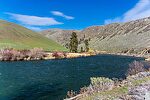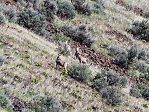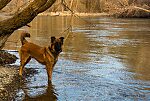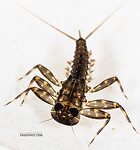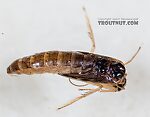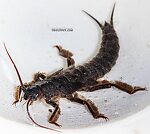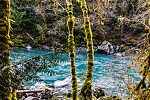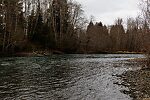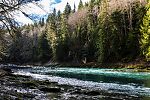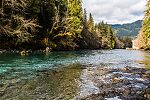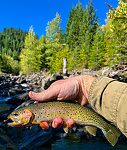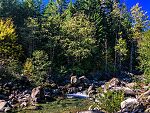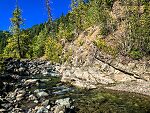Blog & Latest Updates
Fly Fishing Articles
Insects by Common Name


Welcome!
What is Troutnut.com?
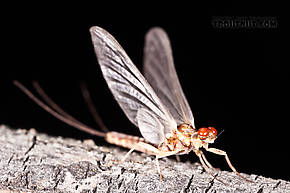
Troutnut.com's aquatic insect encyclopedia is a guide to these players and their stories. Read about the behavior of each species and view thousands of closeup photos, or join the fly fishing forum to meet other devotees of the world's healthiest addiction. You can learn the basics of mayflies, caddisflies, or stoneflies. Or dive into the details of storied species like the Hendrickson hatch and the Hex hatch.
Latest updates
The blog posts below describe every update ever added to Troutnut.com by myself (Troutnut) and other contributors, along with occasional other thoughts and stories from my adventures in fishing, hunting, research, and travel in Alaska and beyond.
New Troutnut version in the works
Regulars might have noticed that I haven't added any new content to Troutnut.com in the past year (May 2021-2022). That's not exactly true—I've added some great new photos throughout the year, but they're all on a private draft version of a completely redesigned website.
Unfortunately, users will have to wait a little longer for the upgrade to see them. I've been so busy with work (lots of exciting research coming together!) that I haven't had time to finish the Troutnut upgrade recently, but it's about 75 % done right now. I've gone long enough without an update here that it seemed like time to at least reveal the plans.
Here are some of the exciting things in store for the upgrade:
I'm really excited to share more when it's ready!
Unfortunately, users will have to wait a little longer for the upgrade to see them. I've been so busy with work (lots of exciting research coming together!) that I haven't had time to finish the Troutnut upgrade recently, but it's about 75 % done right now. I've gone long enough without an update here that it seemed like time to at least reveal the plans.
Here are some of the exciting things in store for the upgrade:
- It will have a "responsive design," which in web developer terms means it will make good use of the screen space on your laptop while still looking good on your smartphone.
- Pages will load much faster.
- Advertisements will be less annoying, and there will be options to get rid of them altogether.
- Taxonomic keys are coming! They will largely use the rigorous technical descriptions from the scientific literature, but with a host of design improvements (including clickable definitions) that make that mmuch easier to use than the originals. My vision for this site has always been to make it a resource for identifying bugs, not only browsing or using them as models for fly tying, and the new version finally realizes that goal.
- All photos will look better, and much better on high-resolution displays like Apple Retina.
- I'm using some new (to me) photography technology to take new bug photos that look much better than the old ones.
- Hatch description pages will contain range maps, links to useful biodiversity databases, and other improvements.
I'm really excited to share more when it's ready!
Quick bug collecting and gear test trip
I was out in the Issaquah Alps doing some puppy training yesterday and decided to bring my bug-collecting stuff along. Mostly it was an excuse to get more practice with my new microscope and test out a new system for holding bugs I've sorted to photograph.
Previously, I've had some sensitive specimens quickly die after being sorted into their own separate containers or compartments, either because the water warms up more quickly in the compartments or the oxygen runs out. This leads to specimens that aren't in ideal shape for photos. To solve the problem, I drilled holes in an ice cube tray and gorilla glued some little squares of 250-micron Nitex mesh (drift sampling net material) to the outside. Then I stick the whole thing in a tub of aerated water with a freezer block. This allows me to separate different types of bugs into lots of compartments, while still having them aerated and cooled from a common, larger reservoir of water.

It worked great. Some typically fragile Baetids and Heptageniids stayed in good shape for a very long time, more than long enough to take photos. I didn't photograph any of the Heptageniids, though, because they were Cinygmula and Rhithrogena nymphs for which there are no species keys available.
My favorite new addition was Claassenia sabulosa, a very pretty golden stonefly nymph.

There were also a lot of Hesperoperla pacifica nymphs in the sample, but I already have good photos of those.
Previously, I've had some sensitive specimens quickly die after being sorted into their own separate containers or compartments, either because the water warms up more quickly in the compartments or the oxygen runs out. This leads to specimens that aren't in ideal shape for photos. To solve the problem, I drilled holes in an ice cube tray and gorilla glued some little squares of 250-micron Nitex mesh (drift sampling net material) to the outside. Then I stick the whole thing in a tub of aerated water with a freezer block. This allows me to separate different types of bugs into lots of compartments, while still having them aerated and cooled from a common, larger reservoir of water.

It worked great. Some typically fragile Baetids and Heptageniids stayed in good shape for a very long time, more than long enough to take photos. I didn't photograph any of the Heptageniids, though, because they were Cinygmula and Rhithrogena nymphs for which there are no species keys available.
My favorite new addition was Claassenia sabulosa, a very pretty golden stonefly nymph.

There were also a lot of Hesperoperla pacifica nymphs in the sample, but I already have good photos of those.
Closeup insects by Troutnut from Holder Creek in Washington
First trout of 2021!
Friday I drove from the Seattle area out to Yakima, Washington, where a FEMA-run Covid vaccination clinic has so many extra doses and appointments that they're eagerly offering them to people who aren't yet officially eligible. (Washington is one of the last states to open the vaccine to everybody.) I'm looking forward to being able to safely travel on airplanes again and have at least a couple exciting fishing trips planned for this summer.
For now, I just wanted to catch the first fish of the year on my drive home via the Yakima Canyon.
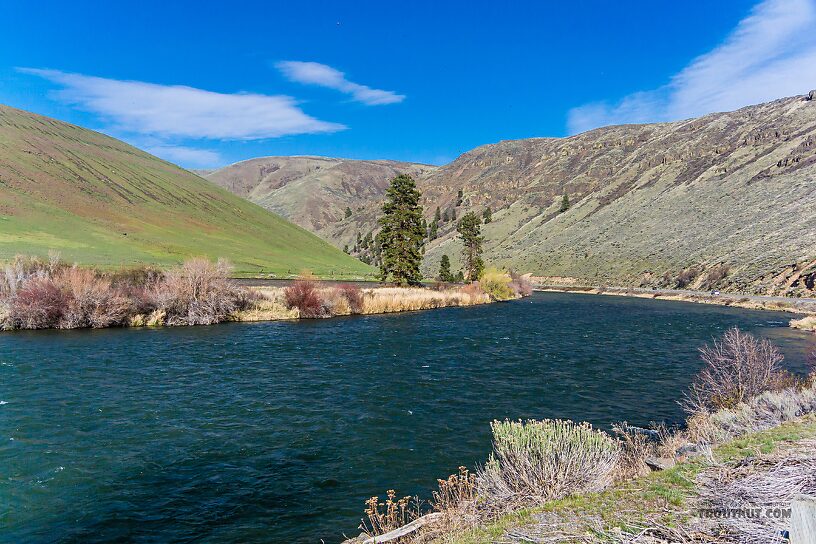
Action on the Yakima was slow, and I'm consistently frustrated there by the difficult access to good spots from the road-side bank. But I did see one single rise, then caught the fish on a nymph.

It's a start!
I also collected quite a few nymphs as an excuse to have some fun with the new microscope I got last fall. The highlight was probably finding a specimen of Heptagenia pulla, which isn't known from Washington or neighboring states.
For now, I just wanted to catch the first fish of the year on my drive home via the Yakima Canyon.

Action on the Yakima was slow, and I'm consistently frustrated there by the difficult access to good spots from the road-side bank. But I did see one single rise, then caught the fish on a nymph.

It's a start!
I also collected quite a few nymphs as an excuse to have some fun with the new microscope I got last fall. The highlight was probably finding a specimen of Heptagenia pulla, which isn't known from Washington or neighboring states.
Photos by Troutnut from the Yakima River in Washington
Closeup insects by Troutnut from the Yakima River in Washington
Briefly exploring steelhead streams
I've lived in Washington for three years and not yet caught a steelhead, or even really tried, in the famed rivers of the Olympic Peninsula. My wife and I had a brief window to get away for about a day and a half and did some exploring over there this week. However, with the short days, beach time, and rambunctious new puppy, I didn't get much serious fishing done. I fished some promising water on the Hoh for about an hour, seeing no fish but talking to others who had, and I spent (Spent: The wing position of many aquatic insects when they fall on the water after mating. The wings of both sides lay flat on the water. The word may be used to describe insects with their wings in that position, as well as the position itself.) all of about ten minutes swinging a fly through a run on the Sol Duc. I'd love to get back there for a few days of serious fishing when time allows.
Photos by Troutnut from the Hoh River and the Sol Duc River in Washington
Dinking around on a small stream
On September 29th I went up to the mountains to sight in my hunting rifle in advance of deer season. However, the custom ammunition I ordered was the wrong length and wouldn't fit into the chamber, so that job ended quickly. (I won't name the company, because they bent over backward to make it right, and I got it fixed by hunting season.) As a consolation prize to make the trip productive, I drove to a nearby stream and played with the colorful little rainbows and cutthroat trout on perdigon nymphs. As a bonus, I caught a striking and unusual species of Siphlonurus mayfly.
Photos by Troutnut from Mystery Creek #249 in Washington
Closeup insects by Troutnut from Mystery Creek #249 in Washington
Female Siphlonurus autumnalis (Gray Drake) Mayfly Spinner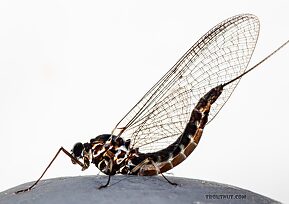 View 8 PicturesI found this specimen and saw a few more of its kind during midday on a small, steep, rocky creek fairly high in the Cascades, different from the previously reported habitats of its species.
View 8 PicturesI found this specimen and saw a few more of its kind during midday on a small, steep, rocky creek fairly high in the Cascades, different from the previously reported habitats of its species.
 View 8 PicturesI found this specimen and saw a few more of its kind during midday on a small, steep, rocky creek fairly high in the Cascades, different from the previously reported habitats of its species.
View 8 PicturesI found this specimen and saw a few more of its kind during midday on a small, steep, rocky creek fairly high in the Cascades, different from the previously reported habitats of its species.Collected September 29, 2020 from Mystery Creek #249 in Washington
Added to Troutnut.com by Troutnut on November 10, 2020
Added to Troutnut.com by Troutnut on November 10, 2020
Featured on the photo forums
This is just a quick sample from the 44780 posts in 5604 topics on our forum. Join to discuss fly fishing, fly tying, bugs, or anything!
| Title | Replies | Last Reply |
| Re: Fishing Kupa River, Slovenia In Fishing Reports by Slocum | 8 | Feb 21, 2018 by Fish1 |
| Re: Truly a labor of love - my 2016 Field Biology class (5 more) In the Photography Board by Jmd123 | 4 | Aug 11, 2016 by PaulRoberts |
| Re: A Visit to Mark Libertone's Hometown (15 more) In the Photography Board by Oldredbarn | 6 | Jun 3, 2016 by Jmd123 |
Top 10 Fly Hatches
Top Gift Shop Designs
Eat mayflies.
Top Insect Specimens
Miscellaneous Sites
Troutnut.com is copyright © 2004-2024 Jason
Neuswanger (email Jason). See my FAQ for information about use of my images.
 privacy policy
privacy policy





